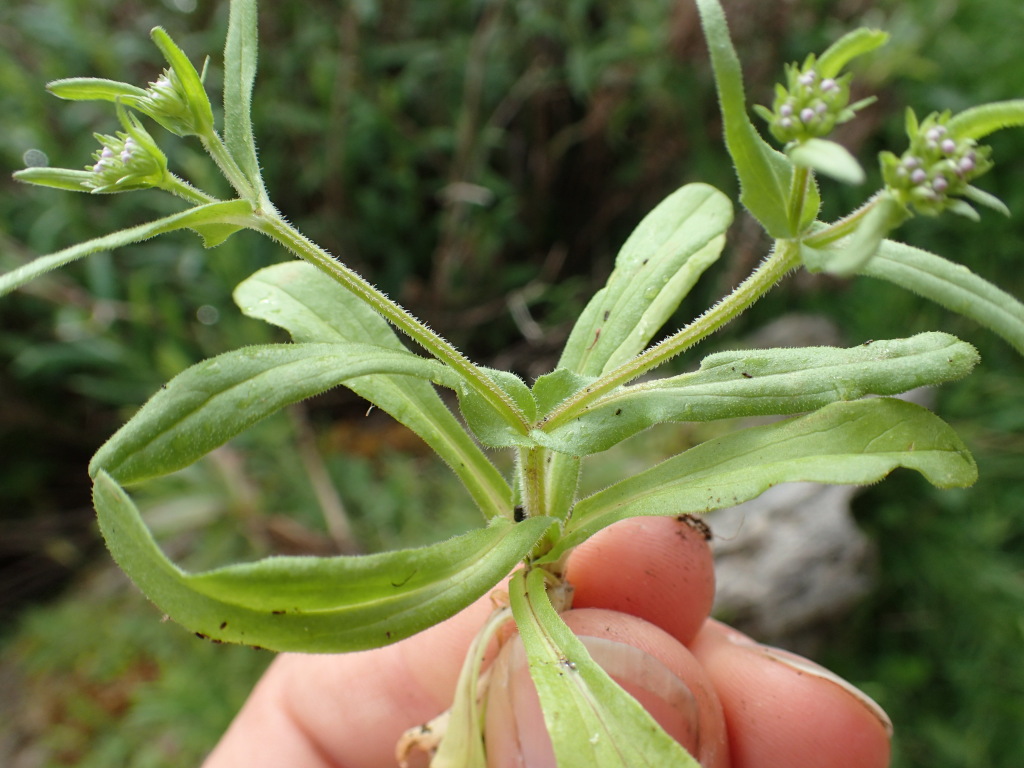Valerianella eriocarpa
Desv. Italian Corn-saladSuberect or decumbent rosetted herb with branches to c. 35 cm long; branches with short bristly hairs mainly along ridges. Rosette leaves petiolate, oblanceolate-spathulate, mostly 2.5–7 cm long and 0.5–2.5 cm wide, obtuse, glabrous except for a few hairs on margins and veins, entire or sinuate; upper leaves sessile, becoming oblong-lanceolate, often with stem-clasping basal lobes, often coarsely toothed near inflorescence. Inflorescences of 1–several corymb-like dichasia, 1–20-flowered; bracts linear-lanceolate, green, clasping flowers and fruit. Calyx obliquely cup-shaped, c. 1 mm long, with 1–6 subequal lobes, enlarging in fruit; corolla blue or white, tube funnel-shaped, to c. 1 mm long, lobes oblong-lanceolate, c. 1 mm long, subequal; stigma with 3 short thread-like branches. Cypsela oblong, c. 1 mm long, slightly compressed, ridged on one side, hispid with spreading or hooked hairs, surmounted by sharply pointed and sometimes toothed calyx. Flowers mainly Oct. and Nov.
GleP, VVP, VRiv, WaP, Gold, CVU, HNF. Also naturalised SA, Tas. Native to southern Europe. Cultivated as a salad plant and occasionally naturalized.
Some authors recognize V. muricata as a species distinct from V. eriocarpa based on the fewer calyx-lobes of the former. The Victorian material shows considerable variation in degree of lobing of the calyx, even on an individual plant, so this distinction appears to have little taxonomic importance.
Jeanes, J.A. (1999). Valerianaceae. In: Walsh, N.G.; Entwisle, T.J., Flora of Victoria Vol. 4, Cornaceae to Asteraceae, pp. 647–649. Inkata Press, Melbourne.
 Spinning
Spinning
